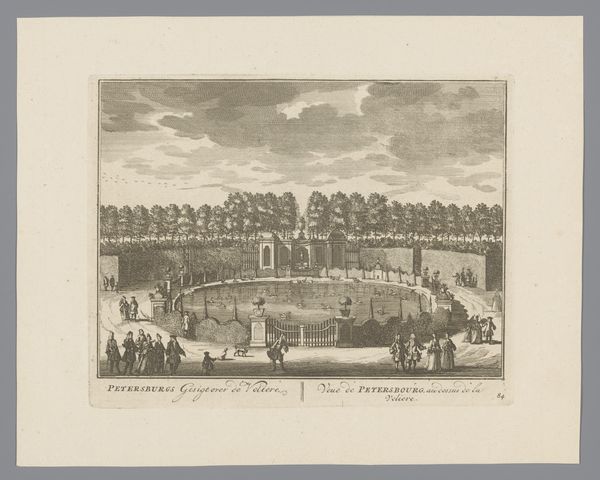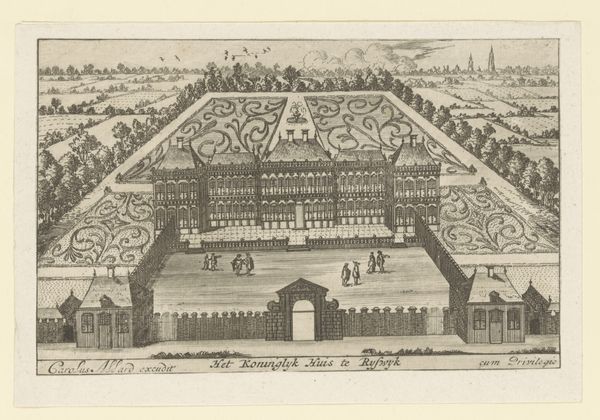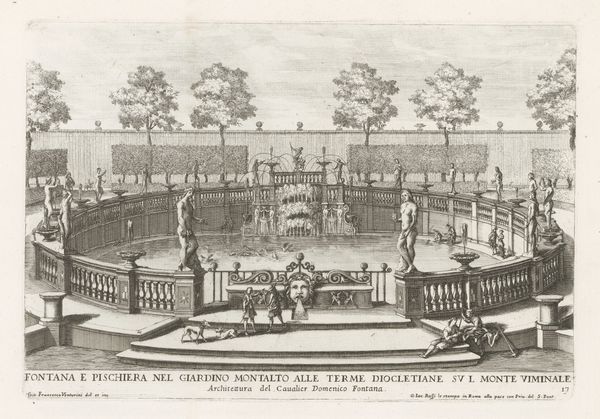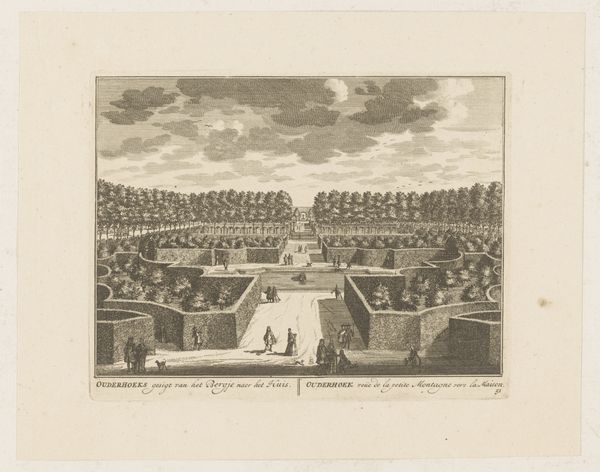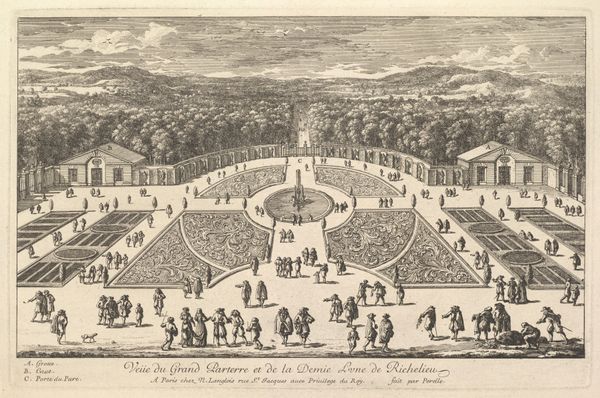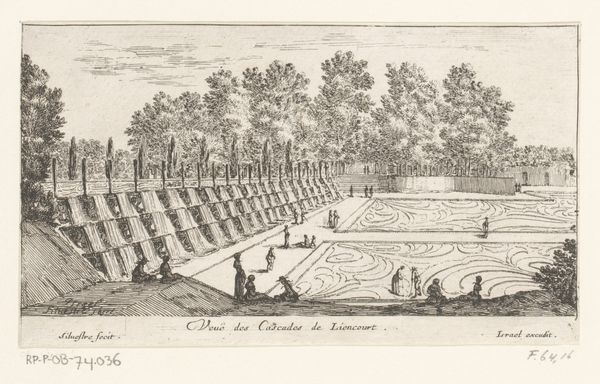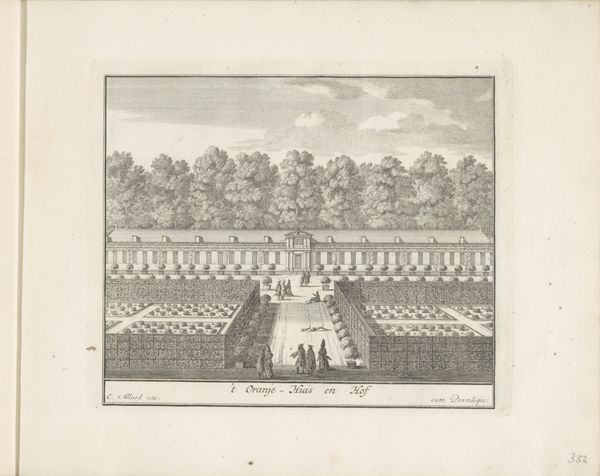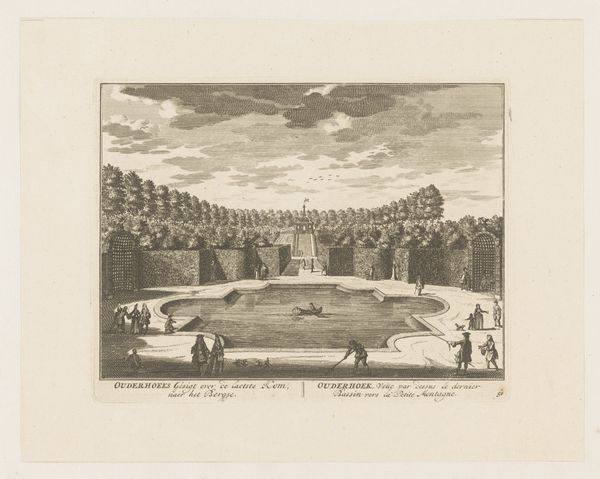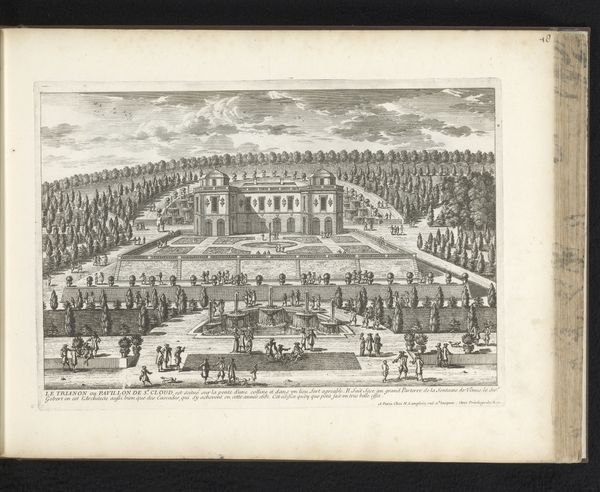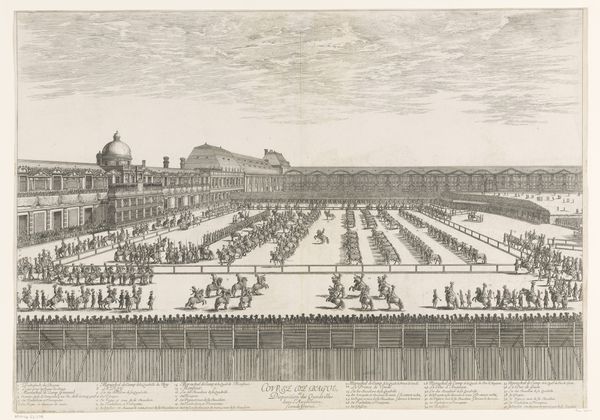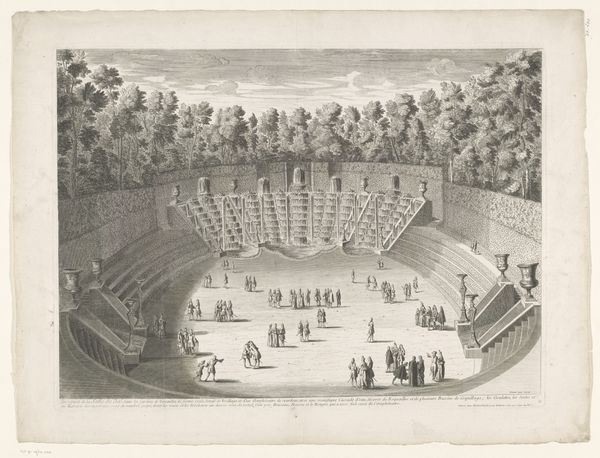
print, etching, engraving
#
baroque
# print
#
etching
#
landscape
#
cityscape
#
engraving
Dimensions: height 440 mm, width 564 mm
Copyright: Rijks Museum: Open Domain
Curator: Quiryn Fonbonne created "Het koninklijke eiland in de tuin van Versailles," or "The Royal Island in the Gardens of Versailles," around 1715. It’s rendered as a print using etching and engraving techniques, and we have it here in the Rijksmuseum's collection. Editor: Immediately, I'm struck by the meticulousness. The rigorous geometric layout feels almost unsettling in its artificiality, a manufactured nature. All those lines and perfect right angles, the severe symmetry... It’s visually quite severe, isn't it? Curator: Absolutely. What’s interesting from a material perspective is considering how this idealized view served the Bourbon monarchy. The print wasn't just a decorative object; it was a tool in projecting absolute power and control over both nature and society through controlled garden spaces. The labour required to construct such environments also showcases this command. Editor: That’s fascinating context. On a formal level, observe the contrasting textures—the feathery trees against the smooth reflecting pool, the tiny figures dotting the pathways to give scale. The printmaker used etching and engraving masterfully to delineate the planes and capture light. Curator: And consider the social dimension: Versailles was essentially a stage for royal spectacle. The print then became a mass-produced version, accessible to a wider audience, propagating the image of royal magnificence, turning architecture and landscape into symbols of state power for consumption. Editor: True. Notice how the composition draws your eye towards the distant treeline. Fonbonne uses perspective to create a sense of depth, though the shallowness of the island's design undercuts any feeling of genuine immersion. It’s meant to be seen, surveyed. It almost acts as propaganda. Curator: Propaganda, yes. More than just artistic ingenuity; it’s an object deeply embedded in the political and social structures of its time. Understanding the processes behind its making helps unveil this historical reality, illustrating the entanglement of art, labor, and social dominance. Editor: I agree. Examining Fonbonne’s image and the visual techniques gives us tools for unlocking broader cultural understandings, whether intended or not. Curator: A good demonstration of how focusing on the social context helps in decoding an object that seems simple but represents powerful systems of representation. Editor: Indeed, a detailed consideration offers a richer and deeper understanding than just taking it at face value.
Comments
No comments
Be the first to comment and join the conversation on the ultimate creative platform.
